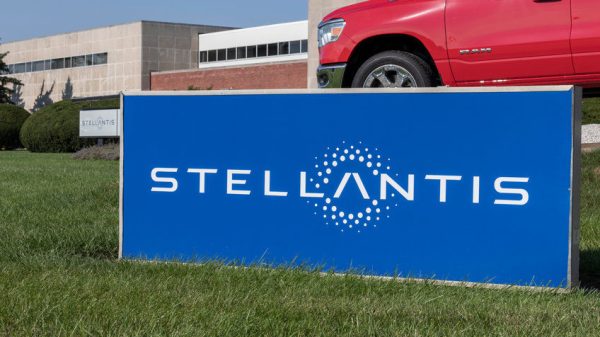What Is PolySign and How Does It Work?
PolySign Inc is a financial technology company providing institutional investors with cutting-edge blockchain-enabled infrastructure in support of digital assets across the capital markets and payments sectors.
Last year, the company raised $53 million in a Series C funding round backed by Cowen Digital, GSR, Brevan Howard, and more. Furthermore, the company secured a $25 million credit facility from venture firm Boathouse Capital.
As a reminder, Series C closed around the same time PolySign Inc acquired digital asset fund administrator MG Stover.
It is worth noting that the company’s family of products includes MG Stover and Standard Custody and Trust Co.
Let’s take a look, MG Stover. It is a full-service fund administration firm built by former auditors and fund operators in order to deliver world-class solutions to the alternative investment industry.
Standard Custody & Trust Co is an institutional-grade custody, escrow and settlement platform for digital assets. Interestingly, it is a subsidiary of PolySign Inc.
The platform mentioned above was founded and designed by talented technologists and innovators from pioneering cryptocurrency and distributed ledger technology companies blended with traditional capital markets expertise.
Standard Custody & Trust Co offers novel blockchain technology that provides end-to-end encryption as well as distributed trust protocols for securing secret keys.
What is digital asset management?
It is a good time to learn more about digital asset management.
Digital Asset Management (DAM) refers to the process of organizing, storing, and distributing digital assets within an organization.
A digital asset can be any type of digital file, including images, videos, audio files, documents, presentations, and more.
DAM systems are designed to centrally manage these assets, making them easily accessible, searchable, and shareable.
The primary goal of digital asset management is to streamline the workflow and enhance the efficiency of managing digital assets throughout their lifecycle.
Digital Asset Management has become increasingly important as organizations deal with growing volumes of digital content. It enables efficient asset reuse, reduces duplication, enhances brand consistency, improves collaboration, and maximizes the value of digital assets across the organization.
Here are some key aspects of digital asset management:
Organization and storage: DAM systems provide a centralized repository where digital assets can be stored securely. Assets are typically organized using metadata, tags, and categories, allowing for easy search and retrieval.
Metadata management: Metadata plays a crucial role in DAM. It consists of descriptive information about an asset, such as title, description, keywords, copyright details, and usage rights. Metadata helps in efficient searching, categorization, and maintaining asset information.
Version control: DAM systems often include versioning capabilities, allowing users to manage different versions of an asset.
This feature helps in tracking changes, preserving previous iterations, and collaborating on asset updates.
DAM and copyright laws
Collaboration and sharing: DAM facilitates collaboration among team members by enabling them to access, review, and comment on assets. It also provides controlled sharing options, allowing assets to be securely shared with internal or external stakeholders.
Rights management: DAM systems can handle rights and permissions associated with digital assets. This ensures compliance with copyright laws, usage restrictions, and licensing agreements, protecting organizations from legal issues.
Workflow automation: DAM tools can automate repetitive tasks, such as file conversions, resizing, and distribution. This saves time and effort for users, enabling them to focus on more critical activities.
Integration with other systems: DAM can integrate with other software systems like content management systems (CMS), customer relationship management (CRM) tools, marketing automation platforms, and creative software applications, ensuring seamless asset exchange and leveraging assets in various contexts.
The importance of blockchain technology
As stated above, PolySign Inc offers cutting-edge blockchain infrastructure to investors.
Blockchain-enabled infrastructure refers to the use of blockchain technology to build and support various types of infrastructure systems.
Blockchain is a decentralized and distributed ledger technology that allows for transparent and secure recording and verification of transactions or data across multiple participants or nodes in a network. By leveraging blockchain, infrastructure systems can benefit from increased transparency, immutability, security, and efficiency.
Here are some examples of how blockchain can be applied to different types of infrastructure:
Supply chain management: Blockchain can be used to create transparent and traceable supply chains by recording each transaction or movement of goods on the blockchain. This enables enhanced visibility, reduces fraud, ensures authenticity, and facilitates efficient tracking and verification of products.
Energy management: Blockchain can enable decentralized energy systems, allowing for peer-to-peer energy trading, efficient grid management, and transparent tracking of energy generation and consumption. Smart contracts on the blockchain can automate transactions and ensure secure and tamper-proof energy exchange.
Blockchain and new opportunities
Identity management: Blockchain can provide a secure and decentralized framework for managing digital identities.
Individuals can have control over their own identity information, reducing the risk of identity theft and improving privacy. Blockchain-based identity systems can enable seamless and trusted verification processes across various applications and services.
Voting systems: It is possible to use blockchain to create transparent and tamper-proof voting systems. By recording votes on the blockchain, it becomes difficult to alter or manipulate the results, ensuring the integrity of the voting process and increasing trust in the outcome.
Financial infrastructure: Blockchain can disrupt traditional financial infrastructure by enabling peer-to-peer transactions, reducing the need for intermediaries, etc.
It can also facilitate the creation and exchange of digital assets, such as cryptocurrencies.
Internet of Things (IoT) infrastructure: Blockchain can enhance the security and interoperability of IoT devices by providing a decentralized and trusted framework for communication, data sharing, and device coordination.
It can enable secure and auditable data exchanges among IoT devices and ensure the integrity of data collected from various sources.
Blockchain-enabled infrastructure has the potential to revolutionize various sectors by improving transparency, security, and efficiency in existing systems. However, it is important to consider factors such as scalability, interoperability, and regulatory considerations when implementing blockchain solutions for infrastructure purposes.
The post What is PolySign and how does it work? appeared first on FinanceBrokerage.
























